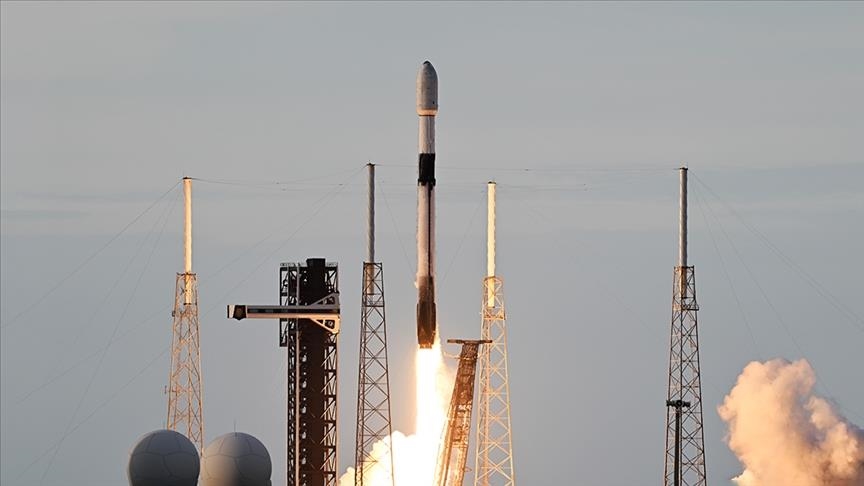Turkish communications satellite Turksat 6A completes 1st year in space
Türkiye’s homegrown satellite expands coverage via export deal, boosts local space industry, says transport minister

ANKARA
Türkiye’s first domestically developed communications satellite, Turksat 6A, has completed its first year in orbit, demonstrating the country’s growing capacity in space technology, Transport Minister Abdulkadir Uraloglu said on Tuesday.
Launched on July 9, 2024, Turksat 6A has become “a symbol of Türkiye’s commitment to engineering, science, and technological production,” Uraloglu told Anadolu.
Work on the satellite spanned around a decade before its deployment. “The Turksat 6A project will offer Türkiye new opportunities in many areas, such as communications, the defense industry, scientific discoveries, and global data infrastructure. During the year that our satellite has been in space, we made significant contributions to human resources development and acquired national satellite experience,” he added.
He said the satellite has boosted employment in the space industry, noting that work on the project began with the establishment of the Turkish Aerospace Industries’ Space Systems Assembly, Integration, and Test Center.
Uraloglu shared that more than 80% of the satellite’s components are domestically manufactured. “The Turkish Scientific and Technological Research Institution developed the space satellite management unit, reaction wheel, and electronic propulsion subsystem,” Uraloglu said.
He added that Turkish defense industry giant Aselsan supplied the system's receiver, antenna, Inertial Network and Electronics Terminal (INET), and payload interface unit. CTech, an Istanbul-based subsidiary of Turkish Aerospace Industries (TAI) since 2018, provided the telemetry transponder, telecommand receiver, and antenna system test adapters, while TAI contributed the battery panel and cabling systems.
Turksat 6A was shipped to SpaceX’s Cape Canaveral facility in Florida for its scheduled launch on July 9, 2024. After six propulsion maneuvers, it reached its designated mission orbit at 42 degrees East on Dec. 28, 2024.
“The first test broadcast from the satellite was conducted on Feb. 17, 2025, so it has been verified,” Uraloglu said. “The satellite was officially put into service on April 21, 2025, at a ceremony attended by Turkish President Recep Tayyip Erdogan, and it will contribute to our country’s space and communications capacity with a wide coverage area.”
He emphasized that Turksat 6A is designed for a lifespan of over 15 years, increasing Türkiye's constellation of communications satellites to six. “The satellite will provide television broadcasting and emergency communications to a wider area,” he said.
Highlighting the achievement, he said that with the development of Turksat 6A, Türkiye now stands among the 11 countries capable of producing communications satellites.
Uraloglu noted that an export agreement was signed at the CABSAT 2025 conference in Dubai between Turksat and a Dubai-based firm to provide services via Turksat 6A to Western and South Asian countries.
“Countries like India, Thailand, Malaysia, and Indonesia have been included in the service coverage area via this export agreement — this is the first time Turksat satellites provided access to these regions, marking a key milestone in the integration of a domestically developed satellite into the international market,” he said. “Turksat can now reach 65% of the world’s population, or 5 billion people, via its satellite fleet.”
Preparations underway for Turksat 7A
Uraloglu also confirmed that planning for Türkiye's next-generation satellite, Turksat 7A, is already underway. Construction began following a new protocol signed on June 19 between the country's sole satellite operator and the Presidency of Transportation, Maritime Affairs, and Communications Research Center, which is affiliated with the Transportation and Infrastructure Ministry)
“The Turksat 7A project was launched as Turksat 3A nears the end of its life,” he said. “Turksat 7A will be equipped with higher data capacity, a wider coverage area, and a ‘flexible’ payload technology, allowing it to dynamically manage resources and provide flexible services across regions.”
The deployment of Turksat 7A is planned for 2029, he added.
Anadolu Agency website contains only a portion of the news stories offered to subscribers in the AA News Broadcasting System (HAS), and in summarized form. Please contact us for subscription options.

